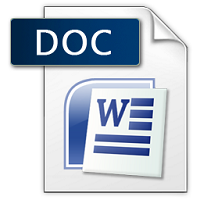₹198.00
Scroll down for Match your questions with Sample
Note- Students need to make Changes before uploading for Avoid similarity issue in turnitin.
Another Option
UNIQUE ASSIGNMENT
0-20% Similarity in turnitin
Price is 700 per assignment
Unique assignment buy via WhatsApp 8755555879
Description
| SESSION | FEB 2024 |
| PROGRAM | BCA |
| SEMESTER | V |
| course CODE & NAME | DCA3102 & VISUAL PROGRAMMING |
| CREDITS | 4 |
| nUMBER OF ASSIGNMENTS & Marks | 02
30 |
Set-I
- Draw and explain architecture of .net framework.
Ans:.NET framework is the product of Microsoft has huge number of libraries and provides language interoperability runs primarily on windows platform. The .NET Framework is defining the background to execute Visual Basic .NET applications and supporting various services to run the application.
This .NET framework supports the traditional way of running applications in the windows platform also supports
Its Half solved only
Buy Complete from our online store
https://smuassignment.in/online-store/
MUJ Fully solved assignment available for session FEB 2024.
Lowest price guarantee with quality.
Charges INR 198 only per assignment. For more information you can get via mail or Whats app also
Mail id is aapkieducation@gmail.com
Our website www.smuassignment.in
After mail, we will reply you instant or maximum
1 hour.
Otherwise you can also contact on our
whatsapp no 8791490301.
- Explain different data types used in VB.Net.
Ans:In VB.Net (Visual Basic .NET), data types are used to define the type of data that a variable can hold.
Each data type has specific characteristics and size requirements.
Here are some of the commonly used data types in VB.Net:
Integer:
- Represents whole numbers.
Examples: -2, 0, 42.
Dim my
- Explain Looping statements with example.
Ans:Loop statements generally the program starts executing statements sequentially but there are situation where the programmer wanted to execute the set of statements for repeated number of times. So the languages supports by providing various loops construct to support the complex situation.
Here loop statements execute either a single or group of statements for a specified number of times.
Following are the
Set-II
- What is constructor and destructors?
Ans:Constructor is defined as constructor in a class is a special type of subroutine is called to create an object. It prepares the new object for use, often accepting parameters that the constructor uses to set member variables required for the object to reach a valid state. It is called a constructor because it constructs the values of data members of the class. Constructors Type: Constructors are primarily three types . The first type is called copy constructor, the second one is default constructor and the third one user define constructor. The first type of constructor that is copy constructor is again further divided into parameterized and
- What is Exception? Explain Try-Catch block with example.
Ans:An exception is an event that occurs during the execution of a program and disrupts the normal flow of its instructions. Exceptions are typically unexpected or erroneous situations that arise during runtime and can lead to program termination if not properly handled. They can be caused by various factors, such as invalid input, file not found, division by zero, or network errors.
The Try, Catch,
- Explain following.
- Dataset
- Data Reader
- Data Adapter
- XML
Components of Tersus Platform
Ans:(a) Dataset: A Dataset in the context of .NET programming, including VB.Net, is an in-memory representation of data retrieved from a data source, such as a database. It is a disconnected, cached set of data that can be used for various purposes, such as data manipulation, sorting, filtering, and displaying. The Dataset class is part of the ADO.NET (ActiveX Data Objects for .NET) framework.
Key features of a

